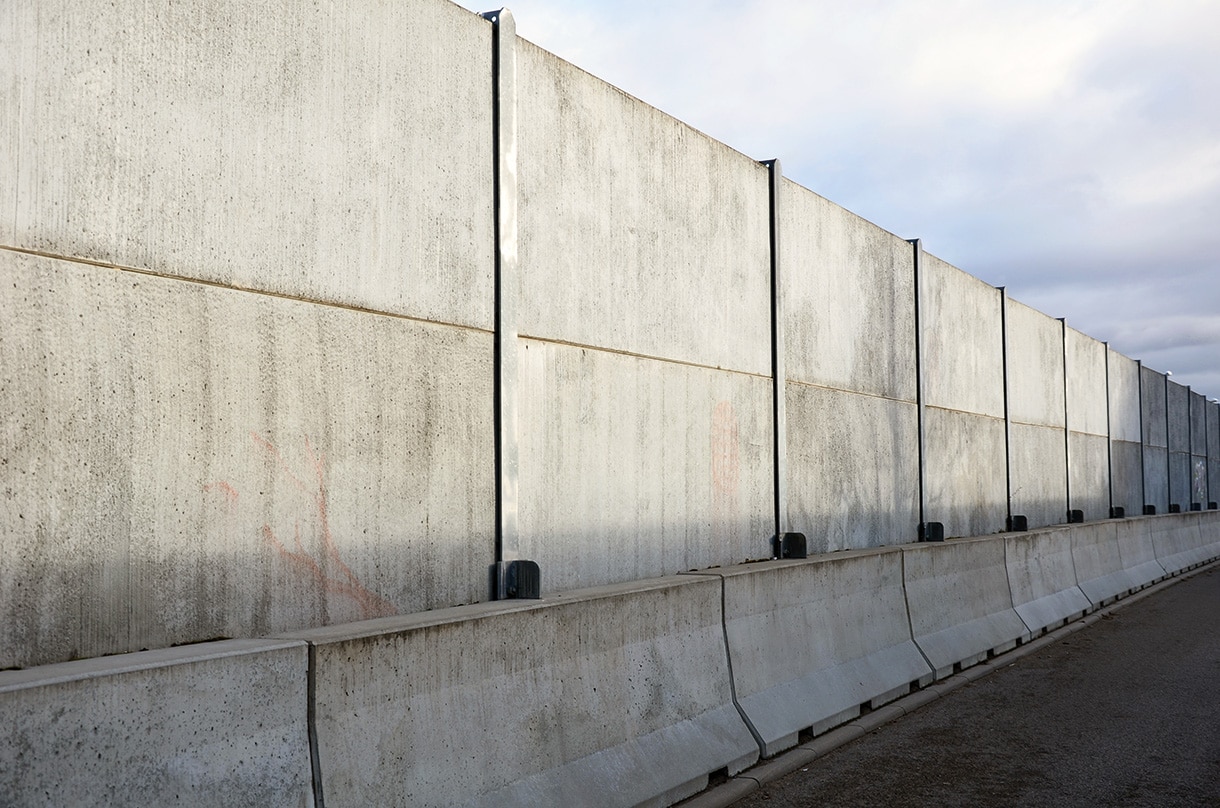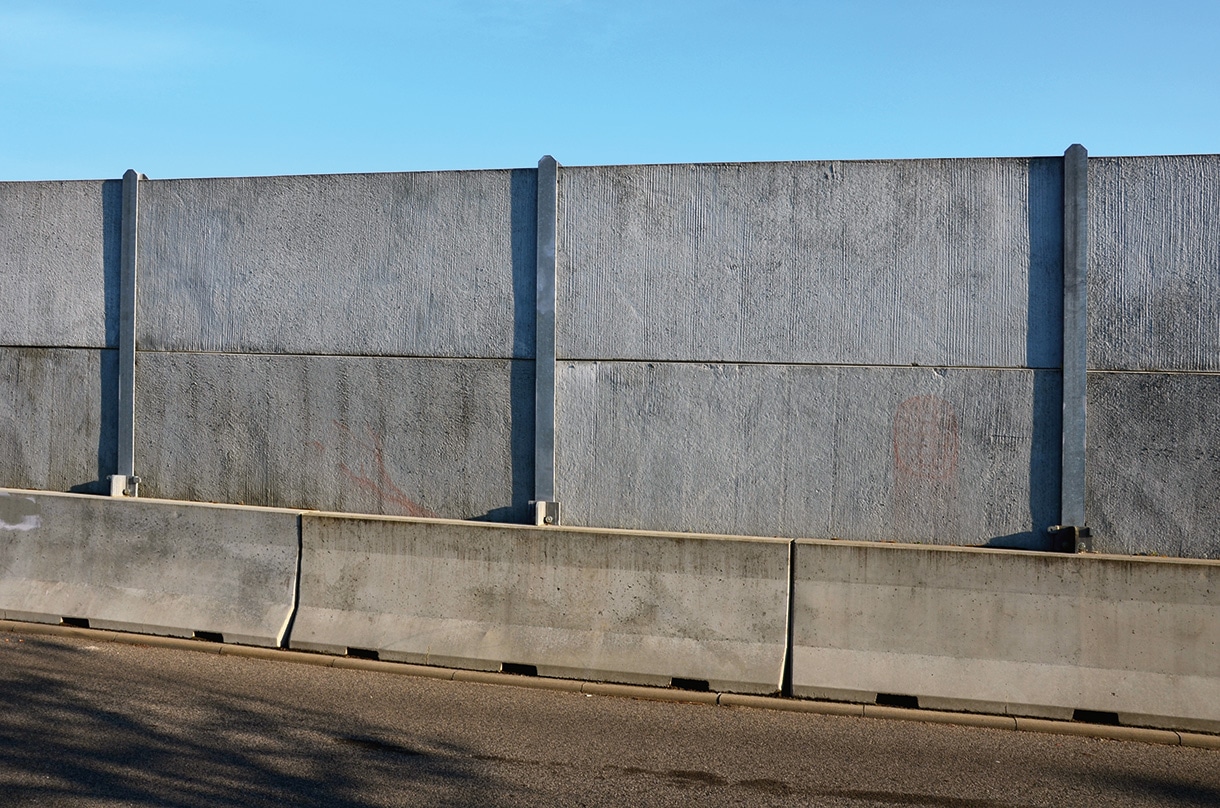
Dr Ailar Hajimohammadi
A project supported by Tyre Stewardship Australia and carried out by researchers at the University of New South Wales is investigating the use of recycled materials to make concrete noise barriers.
Almost 20 per cent of the Australian population are exposed to high levels of traffic noise that are well above those recommended by the World Health Organisation. This can result in various problems such as sleep disturbance, hearing impairment, high blood pressure and cardiovascular complications. Overall, occupational noise exposure levels in Australia cost the country around $2.68 billion per annum due to impacts on health and well-being and productivity loss.
To reduce the noise level to below a safe threshold, noise barriers are often used, as acoustic walls, wall linings and acoustic fences in buildings and workplaces, and as noise walls in roads.
The most common noise barrier used is concrete because it reflects noise back to its source due to its hardened, low-porous surface. However, concrete is a poor sound absorber. Sound waves are simply reflected back to the source and beyond when they strike concrete, and they are barely reduced in magnitude.
One of the popular solutions in Australia to enhance noise absorption is the use of autoclaved aerated concrete (AAC). However, this type of porous concrete consumes more cement than traditional concrete. Considering that cement production is responsible for about five per cent of global carbon dioxide emissions, the manufacturing process of AAC increases its carbon footprint and is not environmentally sustainable.
To help find better alternatives, Tyre Stewardship Australia (TSA) and its industry partners are funding a new research project at the University of New South Wales (UNSW) that aims to design and manufacture novel absorptive noise barriers using waste glass and end-of-life tyres.
UNSW researcher Dr Ailar Hajimohammadi will lead the research, along with Professor Stephen Foster and Assistant Professor Hamid Valipour from UNSW’s Centre for Infrastructure Engineering and Safety and Dr Danielle Moreau from UNSW’s Mechanical and Manufacturing Engineering department. TSA’s partner organisations Flexiroc Australia and John Holland Group will lend financial support, as well as their technical and commercial know-how to the project.
“It is essential,” says Dr Hajimohammadi, “to adopt a concrete material technology that is cost-effective, sustainable and can effectively attenuate noise.”
Lina Goodman, TSA’s CEO, says the project has broad implications for the industry.
“Tyre Stewardship Australia is happy to sponsor the research,” she says, “as it deals directly with one of the most practical challenges faced by the concrete industry in Australia and globally: that is to develop value-added construction products from problematic wastes and improving infrastructure sustainability, without compromising quality and performance.”

Potential for waste reduction
In 2018-19, about 1.2 million tonnes of waste glass was generated in Australia, from which only 58 per cent was recycled. The annual figure for end-of-life waste tyres is around 465,000 tonnes, of which 45 per cent is processed locally, disposed of onsite. or sent to landfill. The rest is exported.
The new export ban on Australian recyclable waste materials has imposed challenges on the waste management sector. The export of waste glass has been banned since January 2021, and whole and baled tyres since December 2021.
Every year in Australia, the equivalent of about 56 million passenger tyres reach the end of life. Stockpiling these tyres is a significant concern and apart from its landfill costs, it could also result in major fires.
On the other hand, a growing mountain of waste glass threatens to inundate cities with landfill. The construction industry is one of the largest markets for the uptake of glass and tyre wastes, and the manufacturers of construction elements are keen to develop innovative products to expand their market and create value for their customers.
Noise attenuation in engineering infrastructure projects is mandated by government authorities, providing a significant additional motivation for infrastructure designers and constructors to incorporate recycled materials and improve the sustainability rating of their products.
“This project will fill existing knowledge gaps,” says Hajimohammadi, “and will develop sustainable and cost-effective noise barriers, in an innovative solution that promotes the development of viable markets for waste glass and end-of-life tyres.”
Hajimohammadi’s project could create potential use for the equivalent of 125,000 recycled passenger tyres per year. While recycled tyre shreds are more expensive than concrete coarse aggregates, Hajimohammadi argues that at 40 per cent coarse aggregate replacement with rubber, the resulting weight reduction will reduce the overall cost of noise walls by lowering their dead weight.
“The tyre-based noise walls will be 30 per cent lighter than the traditional reinforced concrete noise walls. This means that the foundation needed for the wall will be smaller and less excavation and less concrete will be needed in their foundation. Therefore, we can potentially have up to 20 per cent saving in foundation,” she says. “Moreover, a
rubber-based concrete noise wall superstructure in a retaining wall configuration can have a potential saving of up to 10 per cent in traditional concrete wall thickness above ground.”

Expected outcomes
“This is a project with so many great direct and indirect expected outcomes,” Dr Hajimohammadi says.
As part of this project, the noise walls will go through prototyping, mechanical and durability testing, proof testing and computer modelling to validate the results.
Goodman says the research will lead to a new construction method, supported by thorough experimental and numerical analysis in the design of novel concrete noise barriers.
“Increased acoustic, mechanical, and durability performance due to the implementation of the proposed method will considerably increase the competitiveness of the Australian construction industry,” she says.
“It also provides considerable benefits to the construction industry and infrastructure asset owners by reducing costs, carbon dioxide emissions and energy consumption.”
More importantly, she says the project will support the development of new products for Australian and international markets.
“Export of the technology to a global market will put Australian precast concrete manufacturing in a leading position on innovative applications for end-of-life tyres and waste glass, while creating new industry jobs.”
This article was originally published in the June edition of our magazine. To read the magazine, click here.
Related stories:
- Tyre Stewardship Australia welcomes India’s new legislation on end-of-life tyres
- Hankook partners with Tyre Stewardship Australia
- Mercedes-Benz Australia partners with Tyre Stewardship Australia


